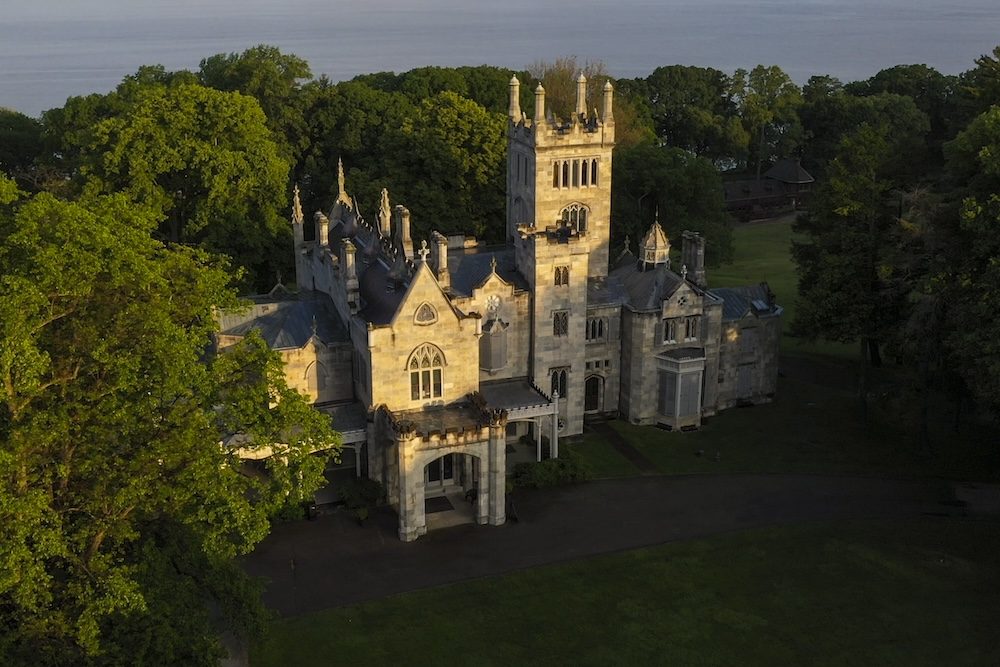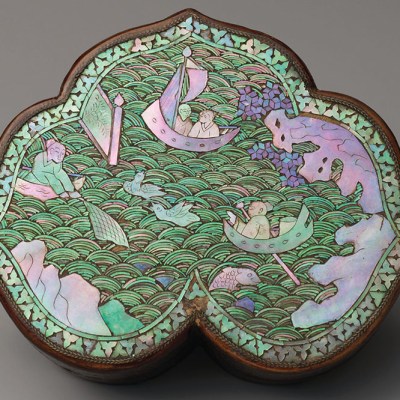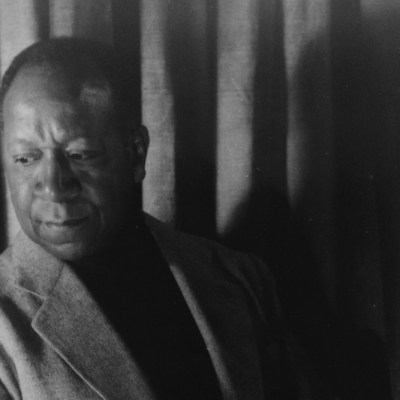From the July/August 2025 issue of Apollo. Preview and subscribe here.
One of the luckiest house museums in America is Lyndhurst, a creamy marble pile perched atop a Hudson River bank, just north of New York City in Tarrytown. Built in phases between the 1830s and 1860s, it is a masterwork of the signature Gothic Revival style of the architect and tastemaker Alexander Jackson Davis (1803–92). Its gingerbread-trimmed porches wrap around crenellated turrets, faceted bays and gargoyles. A series of owners respectfully stewarded it and then, in the 1960s, it was bequeathed to the National Trust for Historic Preservation and opened to the public. It retains most of its Davis-designed furniture and all of its original 67 beflowered acres. How few 19th-century American mansions, on such temptingly subdividable land, have escaped gutting or worse fates!
I have been visiting Lyndhurst since I was a teenager in the 1970s, tagging along with my historian mother. I have watched the site evolve into a major tourist attraction, hosting ever more rounds of indoor and outdoor events; it currently draws about 100,000 visitors every year. It has made frequent appearances lately in Julian Fellowes’s HBO hit The Gilded Age; season after season, his team has used Lyndhurst’s grounds and buildings as backdrops. Lyndhurst is also fortunate enough to have room for temporary exhibitions; a decade ago, a former garage was turned into a climate-controlled gallery. This year’s show, ‘Alexander Jackson Davis: Designer of Dreams’, with furniture, sketches, paintings, books, textiles, tableware and ephemera, focuses on his residential works. Its overall effect is sumptuousness and ebullience, although Davis’s story is not a happy one.
The Art Gallery room at Lyndhurst Mansion. Photo: Gina LeVay; courtesy Lyndhurst Mansion
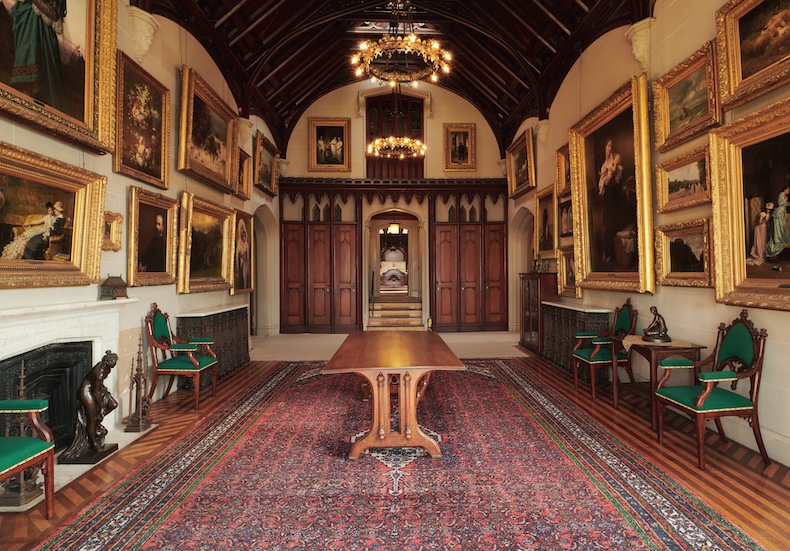
The son of an unprosperous evangelical bookseller and publisher, Davis went to work as a teenager and had minimal formal education but high ambitions. Lyndhurst is displaying his watercolour of an imaginary aristocratic family crest, with a lion wearing a bejewelled crown. Davis tried out careers as a printer, typesetter, artist and architectural draftsman, while dabbling in acting and set design, before realising that architecture was his calling. With no spare cash for overseas travel, he learned about the world’s architecture by poring over publications in libraries and bookshops. He drew inspiration from images of medieval buildings as well as the latest Gothic Revival experiments from contemporaries such as the Pugins. Lyndhurst is displaying one of Davis’s scrapbooks, packed with sketches of serrated parapets, pointed arches and finials shaped like torches aflame.
By the 1830s, he had founded a firm in New York and published a lavishly illustrated monograph of designs for houses and churches. Critics praised his talents for interpreting ‘some ancient castle of romance, arranging the trap doors, subterraneous passages, and drawbridges’. He befriended Manhattan cultural luminaries, including the writer Washington Irving – Lyndhurst is exhibiting a copy of Davis’s monograph that he inscribed to Irving – and the painter and inventor Samuel F.B. Morse.
Presentation drawing of Ericstan for John J. Herrick, Tarrytown, New York (1855), Alexander Jackson Davis. Metropolitan Museum of Art
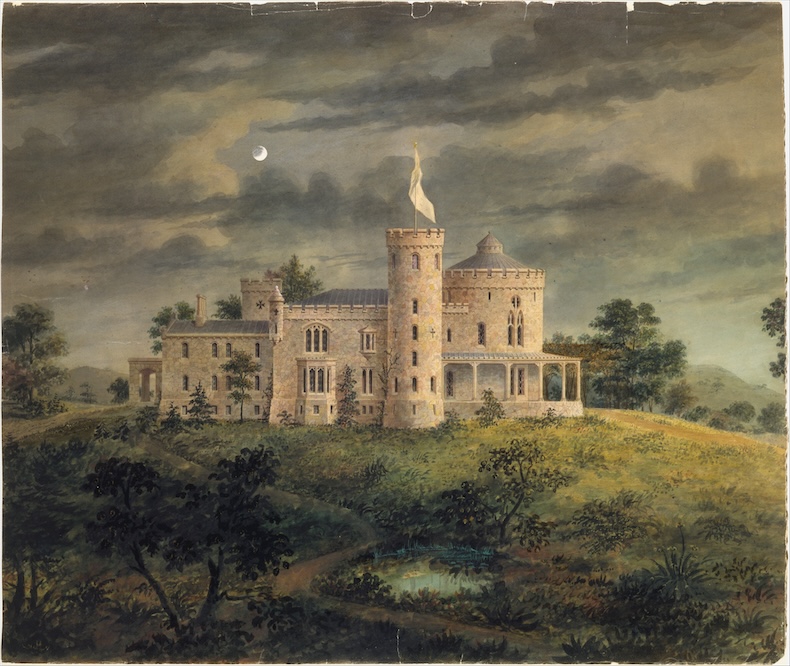
Davis attracted assignments for civic, institutional and residential buildings by the score, from New England to North Carolina and the Great Lakes. Clients wanted to apply a semblance of venerable patina to their newly minted fortunes, to demonstrate their cosmopolitanism with decor steeped in the faraway past. They hoped to combat ‘an insecurity about being an American’, says David Scott Parker, an architect, Davis expert and collector, and major lender to ‘Designer of Dreams’ (for which he has also written a catalogue essay). Davis was a compulsive record-keeper and workaholic, micromanaging contractors lest they produce mouldings with what he called ‘trifling and meretricious character’.
Lyndhurst was originally home to the Paulding family (the matriarch Maria Rhinelander Paulding was an heiress to a trading and real estate fortune), and then Davis expanded it for the Merritt family (whose money came from supplying shock absorbers for railcars). The next-door riverfront neighbour was Washington Irving, whose pale stone home (extant and open as a museum) is trimmed in gingerbread and topped in ziggurats. Around the corner was Davis’s castellated mansion called Ericstan, commissioned by John and Jane Herrick (a flour-merchanting family). Davis gave his clients total works of art, with furnishings imaginatively harmonising with the architecture. His bedposts are miniature steeples – did he enable the sleepers to feel like they were playing house? He draped tracery and scalloping across his armchairs and set his side chairs on dainty cloven hoofs. The Herricks had their visages carved atop their quatrefoil-pierced library armchairs.
But Davis could not change with the postbellum times, as clients took Grand Tours and returned craving their own Frenchified chateaux. He retired to New Jersey with his wife Margaret Beale and their two children, mourning as his prewar buildings were razed, recreating pages from his carefully organised archive that were destroyed when his family home caught fire. Critics mocked him for having stayed too long in his Gothic Revival lane, ‘shutting us up in donjons and fortresses’.
Armchair from Belmead (c. 1848), designed by Alexander Jackson Davis and made by Burns and Trainque. Collection of David Scott Parker. Photo: © Bruce M. White
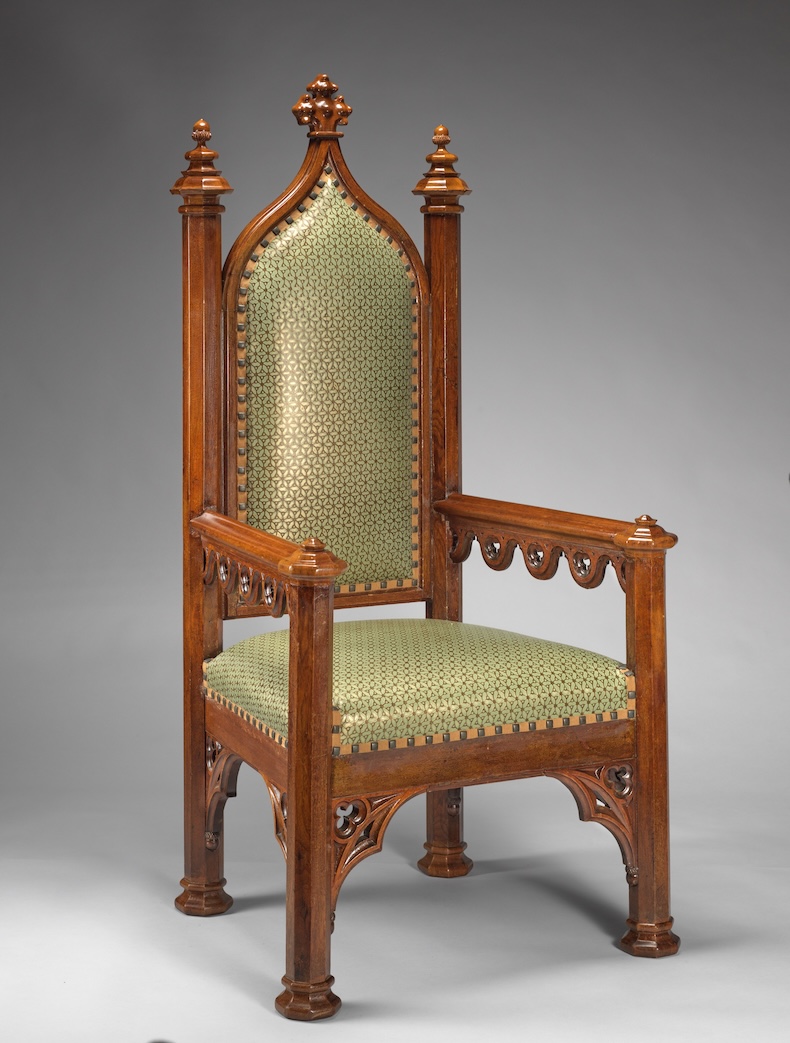
In Lyndhurst’s garage-turned-gallery, the curatorial team has reunited Davis’s original drawings with the actual objects, giving a sense of just how accurately cabinetmakers executed his innovative designs. Photos of the long-demolished Ericstan’s vaulted rooms are displayed near a massive flame-shaped finial that was rescued from the rubble of a crocketed Davis pile in Bridgeport, Connecticut.
‘Designer of Dreams’ spills over into the ground floor of the main house – a dozen borrowed pieces have been incorporated into the decor. Strolling along this enfilade is the only surviving opportunity to see how Davis’s customers lived in their prime. As the riverfront sunlight glints on the polished wood surfaces of the knobby, serrated, twisty, hoofed, petaled, filigreed furniture, in a house saved on all of its original dominion, it is hard to feel even a trace of Gothic gloom.
‘Alexander Jackson Davis: Designer of Dreams’ is at the Lyndhurst Mansion, Tarrytown, New York.
From the July/August 2025 issue of Apollo. Preview and subscribe here.
